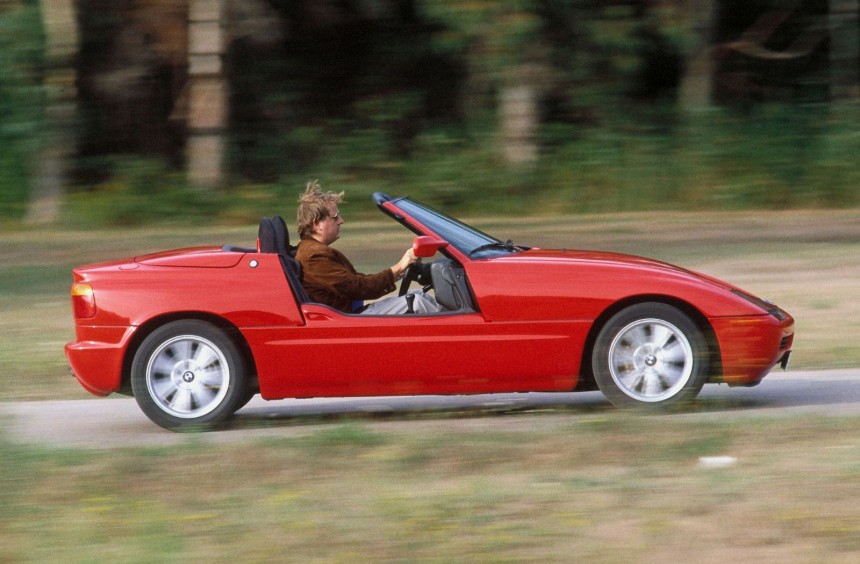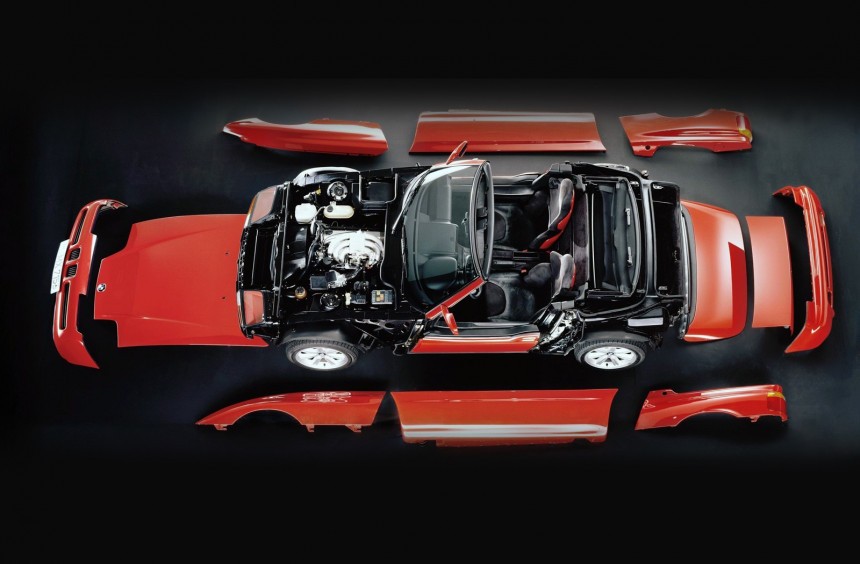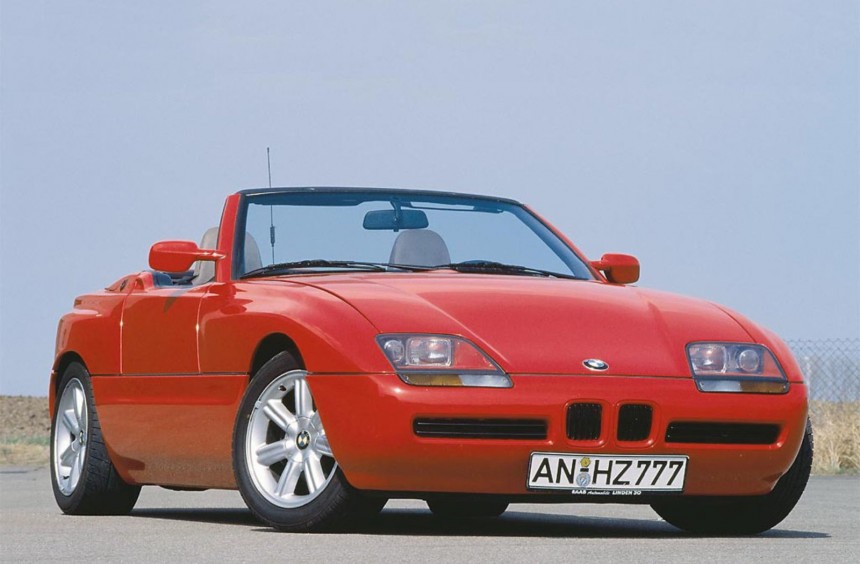A futuristic concept car that somehow made it into production, the Z1 was a BMW like no other. Although it went down as an insanely expensive experiment, it’s still weirdly fascinating 35 years after it made its public debut.
It all started in 1985 when the German carmaker announced the creation of a new division called BMW Technik GmbH that was set to focus on developing cutting-edge concepts vehicles and innovative technologies. At the helm of this new division, the company appointed Ulrich Bez, a famed engineer who made a name for himself while at Porsche, where he oversaw the design of iconic production models such as the Carrera RS 2.7, 930 (known as the 911 Turbo), or 968, and played a key role in the brand’s motorsport accomplishments.
Later that year, Bez and his team presented a futuristic concept car to the BMW board, gaining approval to turn the sketches into reality. Designed by Harm Lagaay (coincidentally, another important figure in Porsche’s history), the Z1 was presented to the public a year later, and at the 1987 Frankfurt Motor Show, the Bavarians shocked the automotive world when they announced that the roadster will enter production.
Built around a steel monocoque, the two-seater looked drastically different than all other models that BMW was producing at the time, and it came with a couple of very unconventional features.
Let’s start with the doors, which were small and didn’t open, yet they were capable of sliding inside the humongous sills. Even more impressive – especially for the 1980s – was the fact that they pulled this disappearing act with just the push of a button. This was made possible by an intricate system that incorporated two electric motors, a series of rods, and a sturdy rubber belt.
The new Technik department insisted that the sliding doors weren’t created just to show the world how inventive and progressive they were, arguing that the design made accessing the vehicle easier and delivered a unique driving experience.
As you can see in the video below posted on YouTube by Doug DeMuro, getting in or out of the Z1 wasn’t particularly hard, yet the design definitely didn’t make the process easier.
Driving with the doors down was undeniably cool and unique, but only at slow speeds. Floor the accelerator, and the air would come at you from all sides, quickly taking all the fun out of the equation.
As the title of this article suggests, the second unconventional feature was the ability to remove all of the Z1’s body panels. Made out of plastic, these components were designed to easily pop off and allow owners to fit another set finished in a different color, a process that would take you as little as 40 minutes - at least according to BMW. In reality, removing and replacing every single panel took nine times as much. This small detail aside, you didn’t have to worry about rust, and damaged panels could be replaced at home.
So, except for these two unusual features, what else did the Z1 have to offer?
It came with a slightly modified version of the E30 dashboard, a glove box inconveniently tucked away behind the passenger seat, the smallest, most useless sun visors ever created, a tiny lid that made it difficult to fit anything remotely bulky inside the trunk, and two bucket seats that were actually impressive.
Even with its minor shortcomings, the eccentric model could have been genuinely great if it had more power. Hailed by the Germans as a lightweight, aerodynamically-efficient masterpiece, it was at least 110 lbs (50 kg) heavier than a standard 3 Series, and the 2.5-liter, six-cylinder borrowed from its sibling could only deliver 168 hp.
However, if you think that all this made it a sales disaster, you’re sadly mistaken. With a starting price of approximately $45,000 ($102,029), it was almost as expensive as a Porsche 911, but it sold surprisingly well, with BMW receiving orders for 3,500 examples before production officially kicked off in 1989. When it was discontinued in 1991, another 4,500 units had left the Munich factory, proving that the Z1’s innovative features and bold styling outweighed its flaws.
Later that year, Bez and his team presented a futuristic concept car to the BMW board, gaining approval to turn the sketches into reality. Designed by Harm Lagaay (coincidentally, another important figure in Porsche’s history), the Z1 was presented to the public a year later, and at the 1987 Frankfurt Motor Show, the Bavarians shocked the automotive world when they announced that the roadster will enter production.
Built around a steel monocoque, the two-seater looked drastically different than all other models that BMW was producing at the time, and it came with a couple of very unconventional features.
The new Technik department insisted that the sliding doors weren’t created just to show the world how inventive and progressive they were, arguing that the design made accessing the vehicle easier and delivered a unique driving experience.
As you can see in the video below posted on YouTube by Doug DeMuro, getting in or out of the Z1 wasn’t particularly hard, yet the design definitely didn’t make the process easier.
Driving with the doors down was undeniably cool and unique, but only at slow speeds. Floor the accelerator, and the air would come at you from all sides, quickly taking all the fun out of the equation.
So, except for these two unusual features, what else did the Z1 have to offer?
It came with a slightly modified version of the E30 dashboard, a glove box inconveniently tucked away behind the passenger seat, the smallest, most useless sun visors ever created, a tiny lid that made it difficult to fit anything remotely bulky inside the trunk, and two bucket seats that were actually impressive.
However, if you think that all this made it a sales disaster, you’re sadly mistaken. With a starting price of approximately $45,000 ($102,029), it was almost as expensive as a Porsche 911, but it sold surprisingly well, with BMW receiving orders for 3,500 examples before production officially kicked off in 1989. When it was discontinued in 1991, another 4,500 units had left the Munich factory, proving that the Z1’s innovative features and bold styling outweighed its flaws.


















